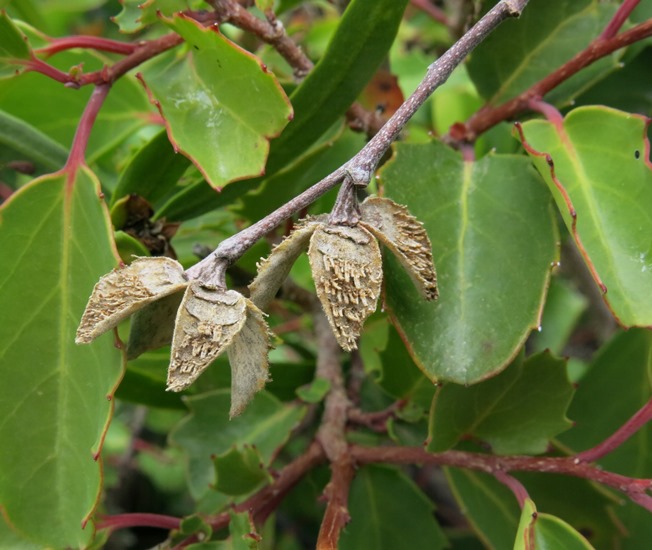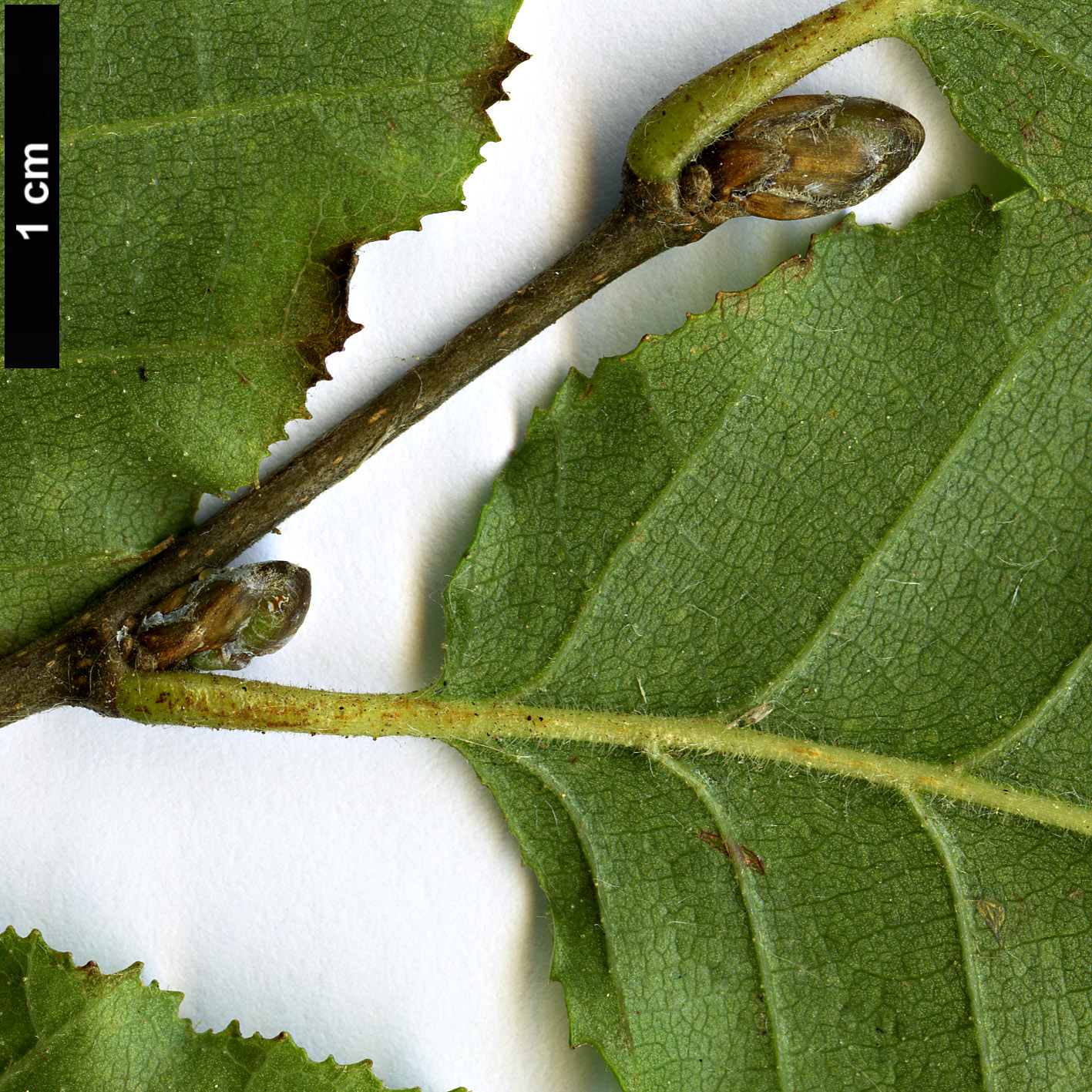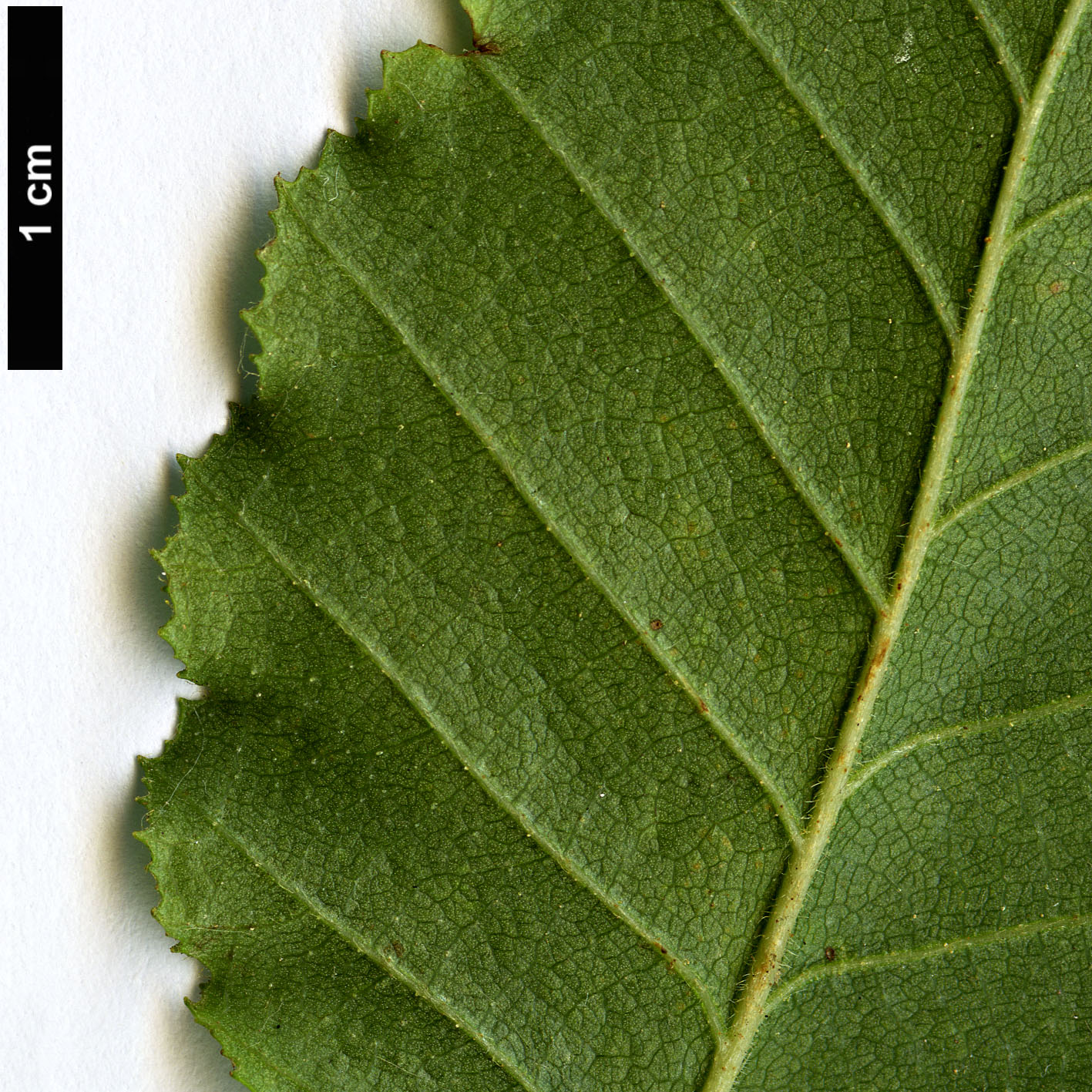Nothofagus macrocarpa
Sponsor
Kindly sponsored by
Col. Giles Crisp
Credits
Owen Johnson (2020)
Recommended citation
'Nothofagus macrocarpa' from the website Trees and Shrubs Online (treesandshrubsonline.
Genus
Common Names
- Roble de Santiago
- Santiago's Oak
Synonyms
- Fagus obliqua var. macrocarpa A. DC.
- Nothofagus obliqua var. macrocarpa (A. DC.) Reiche
- Lophozonia macrocarpa (A. DC.) Heenan & Smissen
Other taxa in genus
- Nothofagus alessandrii
- Nothofagus alpina
- Nothofagus antarctica
- Nothofagus betuloides
- Nothofagus × blairii
- Nothofagus cliffortioides
- Nothofagus cunninghamii
- Nothofagus × dodecaphleps
- Nothofagus dombeyi
- Nothofagus fusca
- Nothofagus glauca
- Nothofagus gunnii
- Nothofagus × leonii
- Nothofagus menziesii
- Nothofagus menziesii × obliqua
- Nothofagus moorei
- Nothofagus nitida
- Nothofagus obliqua
- Nothofagus pumilio
- Nothofagus solandri
- Nothofagus truncata
A deciduous tree usually less than 10 m tall in the wild but it can reach 25 m, often with an imperfectly straight trunk and a slender canopy. Bark pale grey-brown, sometimes with rufous tints, smooth for c. 10 years with some horizontal bands of lenticels then cracking into broad, shallow rather rectangular plates with curling edges; in the wild ultimately more deeply ridged and fissured. Young shoots slender (c. 1.5 mm thick), glabrous or pubescent, brown; buds broad-conic, red-brown, c. 8 × 4 mm, their tips often appressed to the shoot. Leaves ovate to narrowly rectangular, tapering towards a rounded tip, the base tapered, rounded or subcordate and often oblique like an Ulmus; 4–13 × 2–7 cm, irregularly set with small, triangular teeth and usually more or less lobulate, at least in the lower half; dark green above, pale and rather glaucous beneath; pubescent under the main veins and midrib; main veins in 7–11 distinct pairs; upper surface glandular; petiole c. 4 mm, pubescent. Male flowers produced singly in the leaf-axils. Cupules 9–15 mm long, with 3 nutlets more than 7 mm long; cupule with lamellae which are pinnatifid but only 1.5–3.5 mm long, gland-tipped. (Nothofagus (2007–2008); Vazquez & Rodriguez 1999).
Distribution Chile Valparaíso, O'Higgins, Maule and Metropolitano regions
Habitat Mountain forests from 500 – 2000 m.
USDA Hardiness Zone 7-8
RHS Hardiness Rating H5
Conservation status Vulnerable (VU)
Nothofagus macrocarpa represents a northwards high-altitude extension of the population of the much more widely distributed N. obliqua, but has toothed, moss-like scales on the fruit husks and sometimes larger leaves with more neatly parallel veins, which are sticky on top from the exudation of tiny glands: these are individual features more reminiscent of N. alpina. As the species’ name implies, its fruits tend to be very slightly larger than either of those commoner deciduous trees’. The species is assessed as Vulnerable (Baldwin, Barstow & Rivers 2018), as the three remaining fragments of the wild population continue to be harvested for timber and only appear to be reproducing vegetatively.
Nothofagus macrocarpa seems to have been one of several Chilean species first introduced to Europe by the Forestry Commission in 1976–9, though there are no records of any surviving trees in Forestry Commission trial plots. Since the species is a prime candidate for ex-situ conservation, it seems unfortunate that more is not known about the provenance of the older trees in England. Seedlings which are assumed to have been from this original introduction were planted out in the early 1980s at Marwood Hill in Devon, the Sir Harold Hillier Gardens in Hampshire, Peasmarsh Place in East Sussex, and the Thorp Perrow Arboretum in North Yorkshire, England. The trees at Marwood Hill and Peasmarsh Place were both grown as ‘Nothofagus obliqua var. maesocarpa’, which can only have been a misprint for this taxon, and the Peasmarsh Place tree is known to have been received via the late Lord Bradford, who around this time had established a National Collection of Nothofagus in Tavistock Woods in Devon. In these four gardens at least (the Sussex one with a clay soil dry in most summers, and the Yorkshire one with quite frosty winters) the trees have all thrived, reaching 18 m by 2018 (Tree Register 2020) and may possibly grow much bigger than they generally do in their native forests. In general aspect, they very closely resemble N. obliqua, the reasons to plant them probably being limited to their vulnerability in the wild; they are likely to be slightly less cold-tolerant than more southerly provenances of N. obliqua, but in their natural habitat at least they can withstand intense summer heat.
Two recent seed introductions to the Royal Botanic Garden Edinburgh have yielded new young plants; several have been distributed under the accession number 20151930 to collections including Benmore and Logan Botanic Gardens in Scotland, and Glendurgan, the Hillier Arboretum, and Westonbirt in England (T. Christian pers. comm. 2020).











